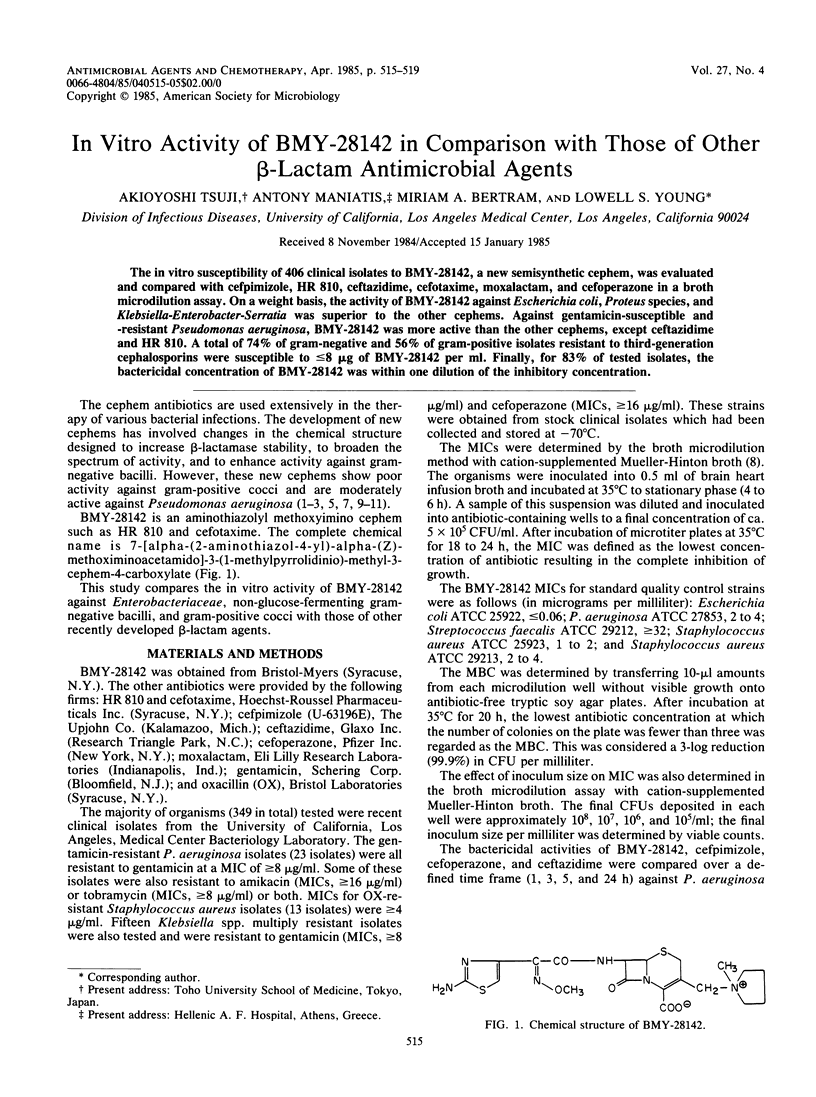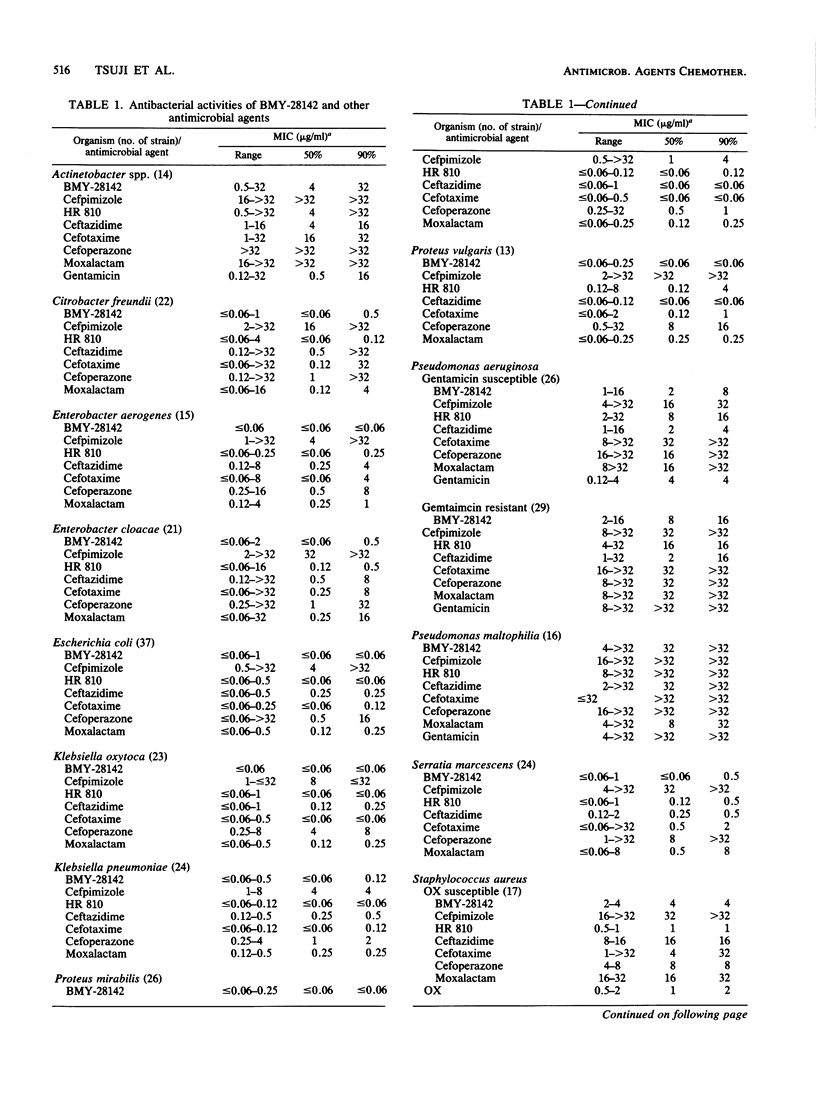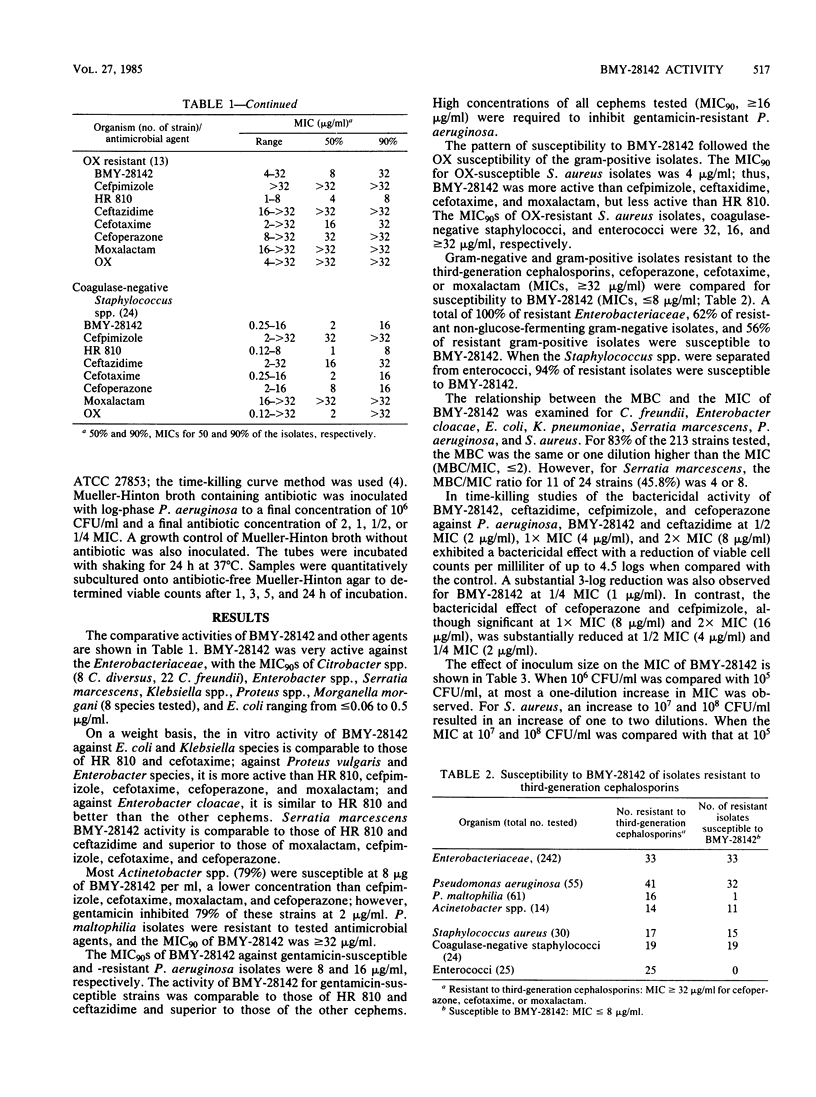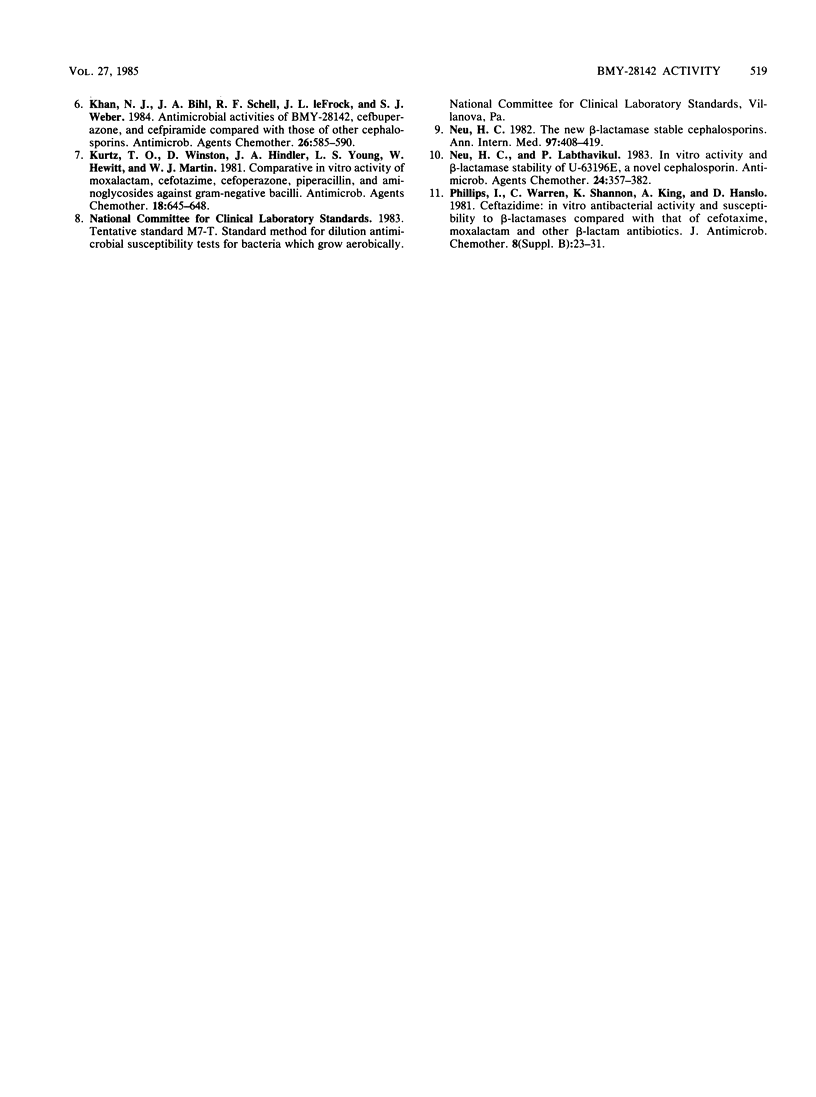Abstract
The in vitro susceptibility of 406 clinical isolates to BMY-28142, a new semisynthetic cephem, was evaluated and compared with cefpimizole, HR 810, ceftazidime, cefotaxime, moxalactam, and cefoperazone in a broth microdilution assay. On a weight basis, the activity of BMY-28142 against Escherichia coli, Proteus species, and Klebsiella-Enterobacter-Serratia was superior to the other cephems. Against gentamicin-susceptible and -resistant Pseudomonas aeruginosa, BMY-28142 was more active than the other cephems, except ceftazidime and HR 810. A total of 74% of gram-negative and 56% of gram-positive isolates resistant to third-generation cephalosporins were susceptible to less than or equal to 8 micrograms of BMY-28142 per ml. Finally, for 83% of tested isolates, the bactericidal concentration of BMY-28142 was within one dilution of the inhibitory concentration.
Full text
PDF




Selected References
These references are in PubMed. This may not be the complete list of references from this article.
- Bertram M. A., Bruckner D. A., Young L. S. In vitro activity of HR 810, a new cephalosporin. Antimicrob Agents Chemother. 1984 Aug;26(2):277–279. doi: 10.1128/aac.26.2.277. [DOI] [PMC free article] [PubMed] [Google Scholar]
- Brooks G. F., Barriere S. L. Clinical use of the new beta-lactam antimicrobial drugs. Practical considerations for physicians, microbiology laboratories, pharmacists, and formulary committees. Ann Intern Med. 1983 Apr;98(4):530–535. doi: 10.7326/0003-4819-98-4-530. [DOI] [PubMed] [Google Scholar]
- Cullmann W., Opferkuch W., Stieglitz M. Relation between beta-lactamase production and antimicrobial activity: comparison of the new compound HR 810 with cefotaxime. Eur J Clin Microbiol. 1983 Aug;2(4):350–352. doi: 10.1007/BF02019466. [DOI] [PubMed] [Google Scholar]
- Goto S., Sakamoto H., Ogawa M., Tsuji A., Kuwahara S. Bactericidal activity of cefazolin, cefoxitin, and cefmetazole against Escherichia coli and Klebsiella pneumoniae. Chemotherapy. 1982;28(1):18–25. doi: 10.1159/000238056. [DOI] [PubMed] [Google Scholar]
- Jones R. N., Thornsberry C., Barry A. L. In vitro evaluation of HR810, a new wide-spectrum aminothiazolyl alpha-methoxyimino cephalosporin. Antimicrob Agents Chemother. 1984 Jun;25(6):710–718. doi: 10.1128/aac.25.6.710. [DOI] [PMC free article] [PubMed] [Google Scholar]
- Khan N. J., Bihl J. A., Schell R. F., LeFrock J. L., Weber S. J. Antimicrobial activities of BMY-28142, cefbuperazone, and cefpiramide compared with those of other cephalosporins. Antimicrob Agents Chemother. 1984 Oct;26(4):585–590. doi: 10.1128/aac.26.4.585. [DOI] [PMC free article] [PubMed] [Google Scholar]
- Kurtz T. O., Winston D. J., Hindler J. A., Young L. S., Hewitt W. L., Martin W. J. Comparative in vitro activity of moxalactam, cefotaxime, cefoperazone, piperacillin, and aminoglycosides against gram-negative bacilli. Antimicrob Agents Chemother. 1980 Oct;18(4):645–648. doi: 10.1128/aac.18.4.645. [DOI] [PMC free article] [PubMed] [Google Scholar]
- Neu H. C., Labthavikul P. In vitro activity and beta-lactamase stability of U-63196E, a novel cephalosporin. Antimicrob Agents Chemother. 1983 Sep;24(3):375–382. doi: 10.1128/aac.24.3.375. [DOI] [PMC free article] [PubMed] [Google Scholar]
- Neu H. C. The new beta-lactamase-stable cephalosporins. Ann Intern Med. 1982 Sep;97(3):408–419. doi: 10.7326/0003-4819-97-3-408. [DOI] [PubMed] [Google Scholar]
- Tanphaichitra D., Bussayanond A., Christensen O. The combination of pivmecillinam and pivampicillin in the treatment of acute enteric fever. J Antimicrob Chemother. 1981 Jul;8(1):23–28. doi: 10.1093/jac/8.1.23. [DOI] [PubMed] [Google Scholar]


